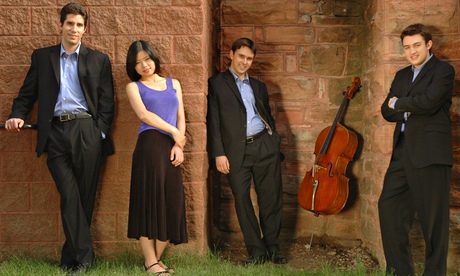
Bach’s Art of Fugue, followed by the original version of Beethoven’s B flat Quartet Op 130, with the Grosse Fuge as its finale, is about as daunting as a chamber concert can get – as much for the players as for the audience. The Escher Quartet’s performance was certainly a triumph of stamina and concentration, if nothing else.
Whether it was a successful programme, though, was another matter. On paper, there’s an obvious logic to pairing Bach’s apotheosis of the form that he did so much to perfect with a work by Beethoven that ends with one of the most extraordinary subsequent examples of that form. Juxtaposing them here, however, proved too much of a good thing. Having hugely admired the Escher’s performances of 20th-century quartets in concert and on disc, I was intrigued to hear what they did with earlier works, but at the end of this almost three-hour concert, I’m not sure I was any the wiser.
The string-quartet arrangement of the Bach was plain to the point of austerity, and the quartet’s delivery, with gravely beautiful tone and strictly rationed vibrato, seemed to emphasise that plainness. They divided the contrapuncti into groups of four, placing the four canons between the groups – the order that, it’s thought, Bach intended – but seemed content to present the music as literally as possible, without suggesting an overall shape or a specific character to any of the individual fugues.
It made the experience rather forbidding, and perhaps because the 90-minute first half of the concert was so taxing, Op 130 never quite seemed to deliver what it promised, either. There was something almost perfunctory about how the Escher launched into the first movement, the rhythms tightly clipped, the phrasing rather abrupt, that set the tone of what followed. Even the Cavatina got short shrift expressively, and the Grosse Fuge, when they reached it, was technically immaculate but curiously diminished, nothing like the monumental, overwhelming event it can be.

